Internet DIY Dharma: What seven Buddhist teachers say about the pros and cons of Buddha’s teachings via the internet and the risks of do-it-yourself Dharma.
What is the promise — and danger — of Buddhist Dharma teachings online beyond the obvious pros vs cons: accessibility of Dharma teachings vs. misinformation or false Dharma teachings. In this feature, you’ll find the opinions of seven teachers and two other experts.
On one point most of the teachers are virtually unanimous: Internet Dharma should play a supportive, informative role — not the replacement for an experienced teacher.
Internet’s Top Ten — “Wikipedia is a mess”
Someone new to Buddhism, for example, might very well search “Buddhism’s top ten” on Google. In a very interesting article in tricycle titled “Google’s Buddhist top ten”, contributing editor Jeff Wilson explains why Google’s top hits are a mixed bag (results vary depending on search date). As an example, he explains,
“Wikipedia is a mess. With more than 7,000 edits and vulnerability to attack — if you clicked on the page recently all you got was a message saying “Buddhism is a gay religion that is not true!.. GO CHRISTIANITY!!!” — Wikipedia’s entry on Buddhism is hardly a dependable source for information.
Worse yet, the Buddhism-related entries serve as a battleground between competing groups of Buddhists, many of them with fringe interpretations of the Dharma, who try to make up for their small numbers by pushing their agendas in large public forums. One side will post information that another dislikes, so they’ll edit an entry to reflect their sectarian view, which will then be edited by another faction, which will be changed by yet another faction, and so on ad infinitum.” [8]
After analyzing the top ten, he concludes only one of these is “really outstanding.” He suggests:
“On the whole, the internet is a blessing for people who want to learn about Buddhism, but it takes time, dedication, and a certain amount of skepticism toward the material of any given website in order to sort out what is reliable information. So take advantage of all that information out there by visiting many sites, and don’t rely on any one webpage in particular to give you all your facts. If you’re suspicious of something, just surf away, or use your favorite search engine to do some fact-checking about anything that seems strange or unreliable.”
![Internet DIY Dharma: What seven Buddhist teachers say about the pros and cons of Buddha's teachings via the internet and the risks of do-it-yourself Dharma. 1 Online, there are numerous "interpreted quotes" and "false" quotes from this popular sutta. A lively debate on "fake quotes" from Kalama Sutta on the "Fake Buddha Quotes" website more or less debunks the most common online versions of this teaching. [15]](https://buddhaweekly.com/wp-content/uploads/2015/12/Buddha-Weekly-Quote-from-Kalamata-Sutta-Fake-Buddhism.jpg)
All Fake Buddha Quotes — False Dharma Online
“All Fake Buddha Quotes” is a very interesting site that attempts to clarify some “misquotes” of Buddha online. Typically, once something is quoted online, even without citation, it can propagate. “Buddha quotes” are everywhere online, but many of them are false, misquoted, mistranslated, or misleading (out of context.) Several of these have been quoted endlessly online, such as:
- “All descriptions of reality are temporary hypotheses.”
- “All things appear and disappear because of causes and conditions.”
- “All things are perfect exactly as they are.”
This may seem harmless to many, but can be misleading for a student seeking the actual Dharma, especially where it deals with the profound wisdom spoken by the Buddha.[9]
Dharma Internet: Pros and Cons David Snyder, Ph.D.

A quick search on “Digital Dharma” or “Buddhist Dharma” brings literally millions of hits on Google. Specialty sites, such as Radio Buddha: Free Dharma for a Free Planet, [2] make it easy to access the teachings of the greatest teachers. A search of any sutra will likely result in a downloadable document. Even the highest yoga tantras and restricted teachings seem freely available online. YouTube videos featuring Buddhist teachers are continuously streamed.
Author and teacher David Snyder, Ph.D., founder of Vipassana Foundation and Dhamma Wiki has this to say:
“Like anything, there are pros and cons, advantages and disadvantages. The disadvantages include some false Dhamma teachings, but the positive far outweighs the negative. There are numerous Suttas translated into many languages on the internet, e-books and other material, mostly at no charge to readers. This is the information age. I can remember when information was a commodity. Some held onto their information and knowledge like a prized-possession. Now some people go to forums and ask questions and there are numerous people ready to provide the information and teachings to help the person. People are not possessive about it anymore because they know that it can be found out anyway through Wikipedia, Google, or another online source. And it is sometimes quite easy to expose the false information from those that try to mislead.” [3]

Judy Lief: “The Dharma is like an ocean… too big to consume”

“At this point in history, there is a greater abundance of dharma available to ordinary practitioners than in any previous era.” writes Judy Lief in her article “Teachings: Get Ready to Dive In.” She eloquently points out that the abundance of dharma available to ordinary practitioners, “is a great blessing, and at the same time, quite overwhelming. But no matter how much you read, how many talks you hear, or how many websites you visit, there is no guarantee that there will be any real benefit. It is good to accumulate knowledge, but it is better to let that knowledge transform you. The benefit comes in the meeting point between you and the Dharma when a seemingly outer teaching strikes a deep inner chord.”
Judy Lief is an Acharya, senior teacher of the Shambala Buddhist tradition, and author of Making Friends with Death. She concludes her article with: “The dharma is like an ocean, which is too big to consume and too heavy to carry along as your accouterment… All you have to do is dive in.” [6]

Zasep Tulku Rinpoche: “Generally positive…But the problem is, there’s no personal connection”

During an extensive interview with Buddha Weekly on wide-ranging topics, Venerable Zasep Rinpoche commented on the Dharma via the internet: “Generally, it has a positive effect. It’s beneficial to have easy access to teachings on YouTube, and you can download material, pictures, and sadhanas and you can find so much information. It’s generally useful and helpful.
“It all depends on the individual. Internet can be very impersonal, you know? It can also be addictive. Even some monks, now, instead of holding malas and doing mantras, they have their phones in hand, sending messages, text messages. In some ways it’s nice. The monks even use chat for spiritual debating. But in some ways it’s really bad. Instead of doing mantras and practices, they spend time online.
“Also, people feel like, “Oh, I don’t have to get in the car and drive forty-five minutes to go to the Dharma Centre and meditate, I can just watch some teachings from a Lama on YouTube.” But the problem is, there’s no personal connection. Some people like that, especially if people are very shy.”
For the full interview with Venerable Zasep Rinpoche, please read here>>
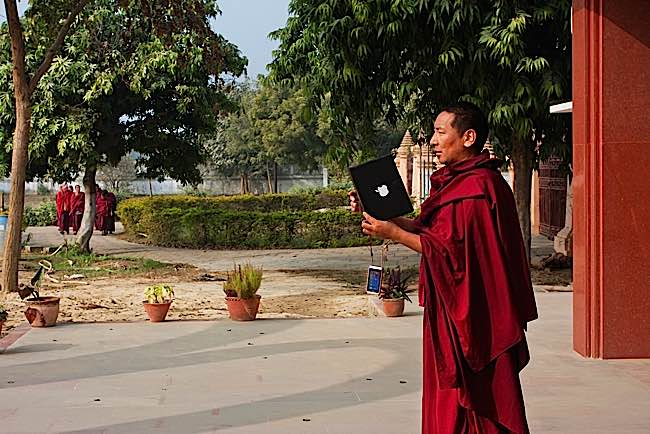
Initiations Online: “No, I disagree with that… You have to be there.”
When Buddha Weekly specifically asked Zasep Rinpoche if a student can receive initiations online via live webcast (in the Vajrayana tradition), Rinpoche emphatically answered: “No, I disagree with that. I mean there is a question about giving “lung”, the transmission of mantra, because all you have to do is hear the voice, right? That’s okay. But, giving initiation, you have to be in front of the person. You have to go and prostrate or drink the saffron water. Lama has to touch the person’s head. You have to be there. You have to be in front of the mandala. Online, you can’t really do that. You’re really diluting and making it very impersonal.”
Ethan Nichtern (Shambala Tradition): “The Internet is Not Your Teacher”
From a talk provocatively titled, “The Internet is Not Your Teacher”, Ethan Nichtern — author of The Road Home”— challenged the notion of self-help Buddhism via the Internet. “My tradition which is a Vajrayana or Tantric tradition has this great framework for determining whether something is harmful or helpful which is called co-emergence which means when you want to figure out if something is destructive or empowering or enlightening or samsaric. It’s both. It’s always both and the internet is especially both. Like more both than anything has ever been.” [7]
Specifically, he focused on two key areas, what he called “cheapening of knowledge and wisdom” and the movement towards “DIY.” He says: “Our entire society, in the words of Generation X, has become very DIY… So there seems to be a strand of dharma, a huge strand of dharma, where we all want to become spiritual libertarians. We want to do the teachings in the way we do them. My teacher a lot of times says if you’re going to ask a teacher for advice you should actually do what they say. Chances are they’re going to tell you to do something you didn’t want to do in some small way.”
He explained that the reason DIY Dharma becomes cheap and commoditized is that students tend to “make the surface all there is” without ever developing depth in the teachings.
He identified the risks of Internet-based DIY Dharma in terms of the three jewels:
- Buddha: disconnection from the teacher and the direct lineage
- Dharma: misunderstanding the Dharma, or only penetrating the “surface” of wisdom
- Sangha: Disassociation with a living Sangha.
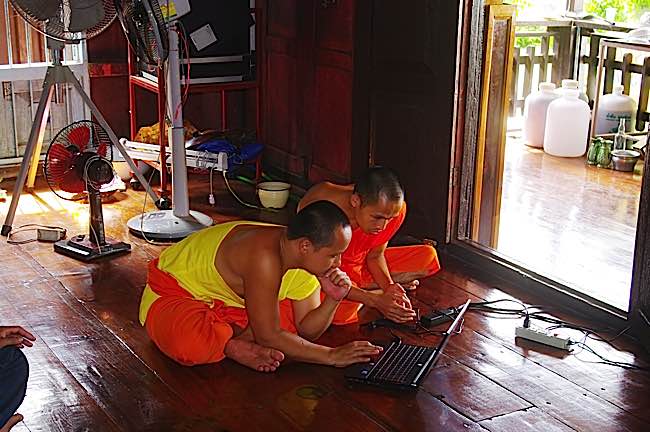
Rachel Wagner and Christopher Accardo: “Dharma for Sale”, a commodity “to be consumed.”
In the interesting book, Buddhism, The Internet and Digital Media, contributors Rachel Wagner and Christopher Accardo explore the interesting rise of “Dharma Apps” for phones and tablets, and their risks. They talk of the “gamification” of Dharma” and the concept of “Dharma for sale.” They rather daringly used language like “Western Buddhism is undeniably commercialized to some degree…” and provocative words like “Dharma supply.”
Aligned somewhat with Ethan Nichtern’s views on DIY Dharma, they pointed out that “North American Buddhist practitioners, in comparison to Buddhist in other parts of the world, are embedded in their sense that it is good and right to realize and express individual selfhood.” They pointed out that we tend to consume “a stream of words or speech delivered to us, as we exercise immense liberty in deciding what aspect will consume.” [5]

Venerable Pannyavara: “Authentic or not?”
Predating the current internet boom in DIY Dharma, an interesting speech by Venerable Pannyavara — webmaster at BuddhaNet — predicted a Cyber Sangha and other benefits, but he cautioned that a “matter that we will have to face is how can we know that what is posted on the Internet is an authentic Buddhist Teaching or not? …”
Although the article was generally optimistic about the growing future role of the internet in disseminating Dharma — most of which has proven true over the course of the last fourteen years — he warned against “individuals who make extravagant, even bizarre claims to some special knowledge or Enlightenment. I can suggest at least one way to judge this. The transmission of knowledge in Buddhism is essentially based on lineage, which is the verification of the students understanding by a lineage teacher or master. While there is a purely text based teachings, the scholarly tradition, the practice of mental culture is based on experiential learning which can be checked by a lineage holder. So whether the postings on the Internet claiming to be the Buddha’s Dharma are authentic Buddhist Teachings or not, or whether it is just the concoction of a cult – could be checked through its lineage, or lack of it.”
NOTES
[1] 2.5 hour Buddha Weekly interview, during Zasep Tulku Rinpoche’s Toronto Tour in fall of 2015.
[2] Radio Buddha: Free Dharma for a free planet
[3] David Snyder, Ph.D. profile on Dhamma Wiki.
[4] BG 230 (Buddhist Geeks): The Internet is Not Your Teacher by Ethan Nichtern
[5] Buddhism, the Internet, and Digital Media: The Pixel in the Lotus, Editors Gregory Price Greive and Daniel Veidlinger , Routledge, 2014 ISBN 1317950348, 9781317950349: quoted from the chapter “Buddhist Apps” by contributors Rachel Wagner and Christopher Accardo.
[6] “E-Learning Buddhism on the Internet” by Venerable Pannyavara, an address given at the German Dharmaduta Society in Columbo Sri-Lanka, July 7th 2002. (Source BuddhaNet)
[7] “Teachings: Get Ready to Dive In” by Judy Lief (Source: “Going It Alone. Making it Work as an Unaffiliated Buddhist.” Urban Dharma.)
[8] “Google’s Buddhist Top Ten“, Jeff Wilson, tricycle Magazine.
3 thoughts on “Internet DIY Dharma: What seven Buddhist teachers say about the pros and cons of Buddha’s teachings via the internet and the risks of do-it-yourself Dharma.”
Leave a Comment
More articles by this author
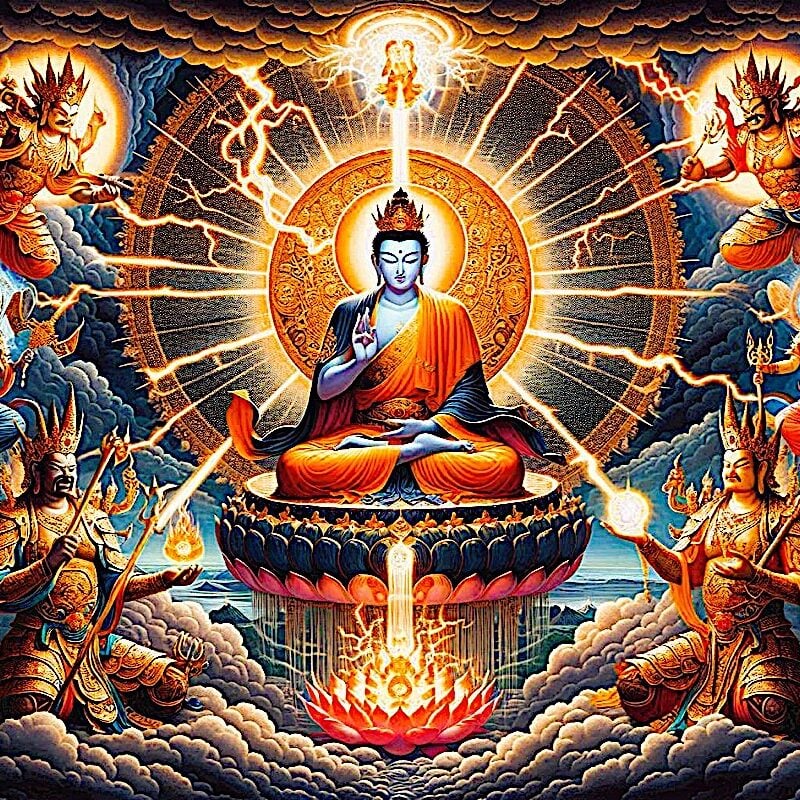
Protection from all Harm, Natural Disaster, Weather, Spirits, Evil, Ghosts, Demons, Obstacles: Golden Light Sutra: Chapter 14

Offering Light for Saga Dawa Duchen and the Month of Merits: Buddha’s Birthday, Enlightenment and Paranirvana 100 Million Merit Day
Search
Latest Features
Please support the "Spread the Dharma" mission as one of our heroic Dharma Supporting Members, or with a one-time donation.
Please Help Support the “Spread the Dharma” Mission!

Be a part of the noble mission as a supporting member or a patron, or a volunteer contributor of content.
The power of Dharma to help sentient beings, in part, lies in ensuring access to Buddha’s precious Dharma — the mission of Buddha Weekly. We can’t do it without you!
A non-profit association since 2007, Buddha Weekly published many feature articles, videos, and, podcasts. Please consider supporting the mission to preserve and “Spread the Dharma." Your support as either a patron or a supporting member helps defray the high costs of producing quality Dharma content. Thank you! Learn more here, or become one of our super karma heroes on Patreon.
Lee Kane
Author | Buddha Weekly
Lee Kane is the editor of Buddha Weekly, since 2007. His main focuses as a writer are mindfulness techniques, meditation, Dharma and Sutra commentaries, Buddhist practices, international perspectives and traditions, Vajrayana, Mahayana, Zen. He also covers various events.
Lee also contributes as a writer to various other online magazines and blogs.






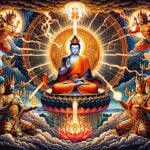


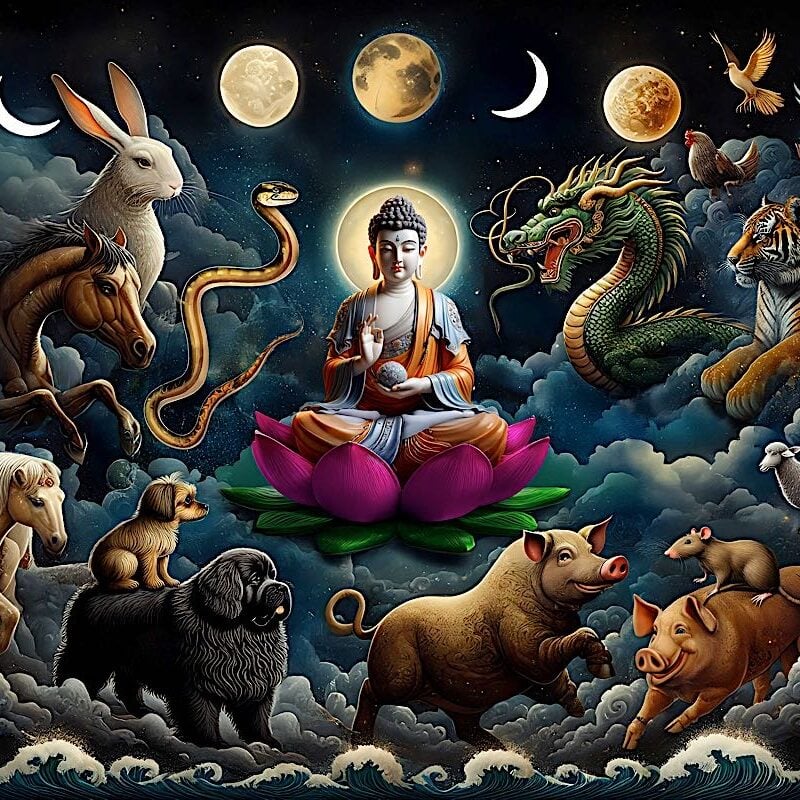
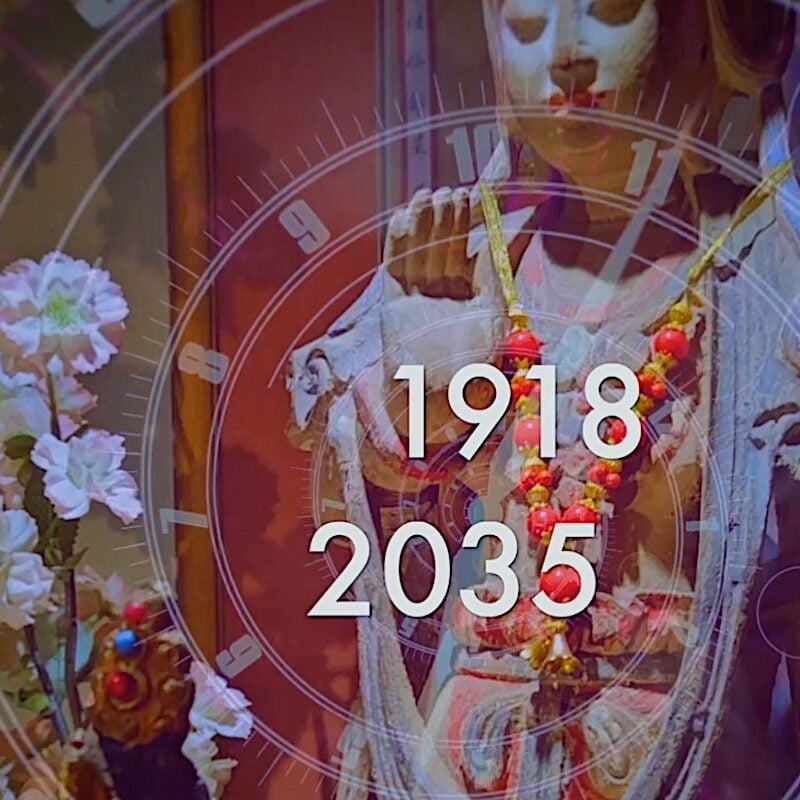






if you have no choice but to do DYI dharma, is there anywhere you can receive help from a teacher via the internet?
Hi Lisa, For years I depended on Internet teachings, since I live remotely.
The best advice I can give is that of the Dalai Lama: “The ultimate authority must always rest with the individual’s own reason and critical analysis.” Also, I would add that I personally would not rely on teachings until I investigated the source. Dharma is easily accessible online, but much of it is misquoted (just search Buddha’s misquotes in Google — countless famous sayings attributed to Buddha are fabricated). Much of it is nonsense. Some of it is political or extreme. But with the negative comes the positive — genuine Dharma teachings are more accessible than they ever have been.
In one way we are fortunate, in modern society we do have access to real teachers who travel and make themselves accessible. We also have the internet. For both — teachers and internet searches — the same cautions apply. Research the teacher and lineage. If the teaching is a written teaching online, only take it seriously if there are many credible citations and sources. Made-up Dharma is more common than the genuine Jewel of Dharma.
At the same time, because of extremism online, trolling and politics, the internet can be misleading. I would never rely on anything read online unless it has citations and links from a credible source, sutra or teacher. Often, for instance, in Buddhist forums, you see contrary opinions on everything, so extreme they almost make things worse for someone seeking simple information. Without citations — and your own good judgment — these have to be taken with a grain of salt. I’ve seen great Buddhist teachers with long lineage and great teachers, flamed, attacked or insulted. If we took all this seriously, just because someone vented online, we might never find our way to an authentic teacher. This is why lineage is so valued in Buddhism. If you’re receiving teachings from a teacher with a long lineage, the teachings are less likely to be incorrectly interpreted.
Even when you find a good source online, or a good teacher, Buddhism, as you know, ultimately requires personal journey and discrimination. And, if the teaching seems to foster negative emotions, or rigidity, it’s probably not genuine. Again, from the Dalai Lama: ““The whole purpose of religion is to facilitate love and compassion, patience, tolerance, humility, and forgiveness.” In other words, if you’re comfortable, and it passes the test of credibility and compassionate insights, that’s usually enough. Any internet source that fosters intolerance, lack of compassion, lack of humility, lack of forgiveness would be off my personal list.
Having preambled with all that, depending on which school (if any) of Buddhism you are engaged with, the official sites of various schools or teachers can be very useful (at least if they’re official, you feel some comfort). For instance, a Tibetan Buddhist might use the Dalai Lama’s official site, or Lama Yeshe’s wonderful “wisdom archive” as a good starting point. A Zen Buddhist might rely on the teachings of the great Thich Nhat Hanh, found on YouTube or on the Plum Village site. For that matter, once you’ve found a teacher you find credible, with lineage and compassionate teachings, just searching his name on YouTube or online will bring up many teachings. If it’s video, it’s credibly from “the teacher’s own mouth.”
For more general information, or a cross-section of opinions and insights, periodicals such as Buddha Weekly, or Tricycle would be valuable. In these type of sites/publications, they interview genuine teachers and/or cite sources.
I know how you feel about the internet — I live very far from urban centres — so I know how convenient it is. Having said that, teachers often travel annually or semi annually to different locations. My own teacher travels to various locations in Canada, US, Australia, Mexico and Mongolia, and I was fortunate enough to notice a teaching (a three hour drive from where I am) years ago. The internet can be good for searching events and local teachings. Regardless of where you live, there likely is a Buddhist centre or at least events from visiting teachers. Nothing can replace that experience.
I wish you well on your journey of discovery. In kindness, Derek
Very helpful collection of voices and opinions on a very important topic! I particularly resonated with the last opinion — Venerable Pannyavara: “Authentic or not?” Thanks so much for this!